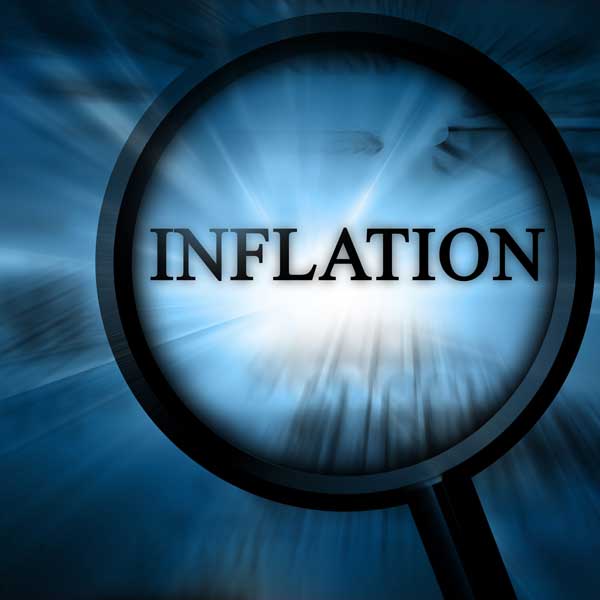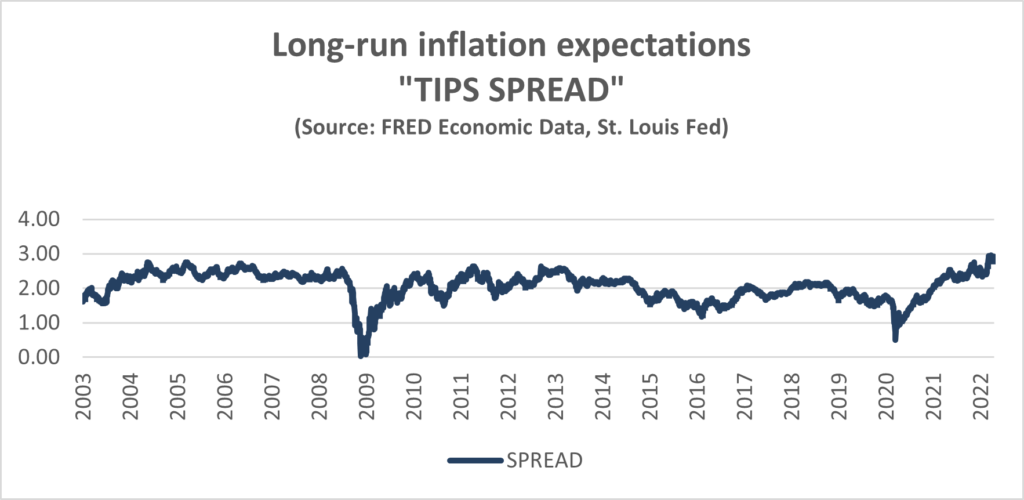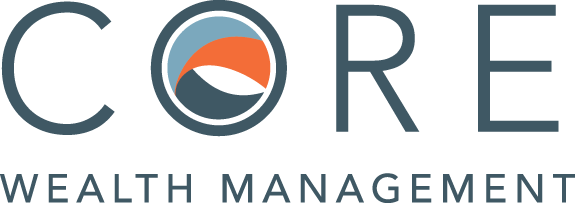
The Long Term Outlook for Inflation Core Wealth Management Abacoa Jupiter Florida
Earlier this month, the U.S. Bureau of Labor Statistics announced that the Consumer Price Index (CPI) for All Urban Consumers had risen 8.5% for the 12-month period ending March 31, 2022. This marked the fourth consecutive month where the annual CPI rate was 7% or more. When it comes to the reality of higher inflation, we are now in the acceptance phase.
But is 7-8% what we should expect going forward? Or will the rate settle back into something more normal? One way to forecast long-run inflation is to observe what is known as the “TIPS spread”.
Using the TIPS Spread to Forecast Inflation Treasury Inflation
Protected Securities (TIPS) are a special type of United State Treasury Security, first introduced in 1997, where the face value of the bond, and by extension, the coupon payment, increases each year by the increase in the Consumer Price Index.
By examining the difference in the yields between traditional US Treasury bonds (the nominal yield) and TIPS, we observe the market’s expectations regarding future inflation as measured by the Consumer Price Index. This comparison is known as the “TIPS spread”.
For example, as of 4/18/2022, the market yield on the US Inflation-Indexed Treasury Security (“TIP”) was -0.07%, and the market yield on the US 10 Year Treasury Security was 2.85%. The difference, or the “spread”, is 2.92%. This implies that the market anticipates an inflation rate of 2.92%, or about 3%, over the next 10 years. Obviously, this is much lower than the 7-8% price increases we have seen in recent months indicating that the market does not expect this level of inflation to persist. However, we cannot ignore the fact that the spread, at 2.92%, is still higher than it’s been at any time in the last two decades!
 What Does This Mean for You?
What Does This Mean for You?
There is no doubt, that we are all feeling the impact of higher prices whether it be at the grocery store, at the gas pump, at your favorite restaurant, or shopping venue. But what do these higher prices mean for your long-term financial plan?
As circumstances change – whether they are unique to you (i.e. your cash flow needs, your retirement date, your saving ability, your goals, etc.) or are more global in nature (i.e. return assumptions on your investments and inflation rate) – your plan should be updated regularly. Assumptions related to your baseline spending need, the assumed inflation rate, and investment returns may need to be modified to reflect the current economic reality. This is a normal and crucial aspect of the financial planning process and is integral to helping keep you on track towards meeting both your short and longer-term goals.

